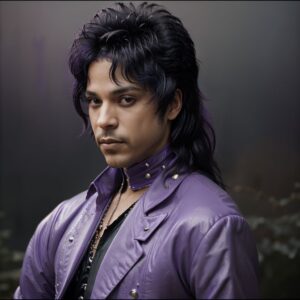On June 7, 1984, the world of music and cinema was forever altered with the premiere of Purple Rain, the film and accompanying soundtrack that catapulted Prince from a rising star into a cultural icon. At a time when genres were rigid and the entertainment industry clung tightly to formulas, Prince broke the mold—mixing rock, R&B, funk, and a bold visual aesthetic into a singular, unforgettable experience. Purple Rain wasn’t just a movie; it was a manifesto of artistry, emotion, and defiance wrapped in lace, leather, and raw musical genius.
The film, loosely based on Prince’s own life, told the story of “The Kid,” a gifted but troubled musician navigating love, pain, and rivalry in the smoky clubs of Minneapolis. Though critics were divided on the acting and storyline, the music was universally acclaimed. Songs like “Let’s Go Crazy,” “When Doves Cry,” and the title track “Purple Rain” became instant classics—each one a sonic explosion of passion and innovation. With searing guitar solos, haunting lyrics, and a voice that could purr or howl, Prince delivered not just an album, but a soul-baring performance that transcended the screen.
What set Purple Rain apart wasn’t just the sound—it was the spirit. Prince made vulnerability look powerful. He danced with gender norms, pushed the boundaries of what Black artists were “supposed” to do, and demanded space in a white-dominated rock arena without apology. He showed that you could be sensual and spiritual, flamboyant and masculine, tortured and triumphant—all at once. And for countless fans who felt out of place in the mainstream, Purple Rain became more than a film; it was a lifeline, a revolution in purple sequins.
Forty years later, the legacy of Purple Rain still pulses through the music industry. It taught a generation that true artistry doesn’t just reflect the world—it reimagines it. On June 7, 1984, Prince didn’t just premiere a movie—he gave us permission to be extraordinary.

